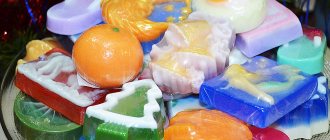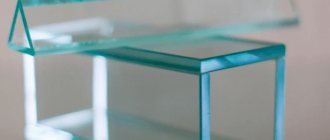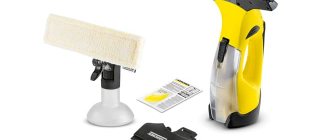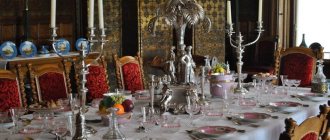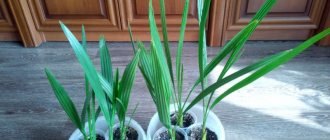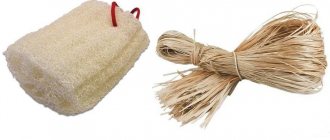Did you know that food starch can be used to make glue at home? The simple, affordable product is absolutely harmless and is widely used in everyday life.
Starch paste is used for gluing thin wallpaper and as a primer on walls. For coating paper and fabric insulation for window slits. For fixing album bindings and creative fakes. Homemade paste is made from starch or flour. A multifunctional way to make homemade paste is from potato starch.
What is starch
Physically, it is a white powder, tasteless and odorless, soluble only in hot water. From a chemical point of view, starch is a polysaccharide. It consists of glucose without one molecule of water.
The formula of glucose is C6(H2O)6
Starch formula - C6(H2O)5
This feature determines starch as the main nutritional element for living beings. The cells of all living things need energy. The main supplier of energy is starch, found in plant foods. In the body, the substance is processed into glucose, which provides the body's cells with energy.
| From corn starch | High curing ability. Slightly cloudy. Cooked at high temperature. It may not spoil for a week or more. |
| From wheat starch (regular flour) | Medium hardening ability. Does not spoil for several days. A little cloudy. Widely used in bookbinding. It is not boiled, but poured in a thin stream into boiling water. Otherwise, after cooling, the paste will lag behind. |
| From potato starch | Transparent, clean. Low curing ability. It changes easily in air and sours quickly. Cooking does not require high temperatures. |
| From rye flour | It has an enviable strength when mixed with turpentine (resin). Resistant to dampness. It can be used for pasting stoves, gluing new wallpaper over old ones. |
Where can I use it?
The polysaccharide and derivatives based on it are used both in everyday life and in various areas of industrial production.
At home.
Until the middle of the last century, starch was the main substance from which wallpaper glue was made.
The starched collars and cuffs of men's shirts speak of the neatness of their owners. Wrinkle-resistant tablecloths, aprons, napkins are a characteristic of the housewife.
Foods prepared using plant ingredients always include this glucose derivative.
In industry.
- The production of paper and cardboard cannot exist without starch. In the production of corrugated cardboard in the middle of the last century, liquid glass was abandoned, replacing glass with a starch suspension.
- In the medical field, in the production of drugs, glucose polysaccharide is present in every tablet and capsule. All kinds of powders and solutions are also prepared using starch.
- Food manufacturers use polysaccharide as an independent product, the main filler. Glucose and ethanol are prepared from this carbohydrate.
- In the chemical industry, glucose polysaccharide is used as an indicator of chemical reactions. In these cases, the ability of starch to change color depending on the presence of certain substances in the solution is used.
How to restore thickened glue
The paste, placed in a cold place, can be stored for up to 5 days. However, it may become too thick. This will make it difficult to apply the composition to the wallpaper, increase consumption, and reduce the quality of gluing the material. But do not rush to throw away the thickened paste. Adding a small amount of hot water will help revive it.
The procedure is as follows:
- Bring the water to a boil.
- Remove the crust that has formed from the surface of the paste. If this is not done, it will turn into lumps.
- Then, with constant stirring, pour boiling water into the paste. Add water gradually, controlling the consistency of the paste.
- Cool the cooked mixture slightly and strain it to remove any lumps formed during thickening.
If mold has formed in the thickened paste after storage, it should be thrown away. Restoring such a composition will not prevent the growth of fungus, and pathogenic microorganisms will multiply under the pasted wallpaper.
Paste is a cheap, healthy and at the same time very effective adhesive composition. If the preparation technology is followed, it firmly fixes paper, non-woven and vinyl wallpaper on most surfaces. For paper-based finishing materials, this is an ideal product.
The composition is safe and does not cause negative reactions in the body. They can be used for wallpapering in the rooms of allergy sufferers and small children. The pasted material, if necessary, can be easily removed from the surfaces after a little moistening.
Ingredients and equipment for cooking with your own hands
Before we learn how to prepare a paste from starch, let’s determine what is needed for this.
The ease of preparing the paste consists of a small amount of initial ingredients - starch and water. Starch is bought, and water is ordinary tap water.
There are also no special devices. You need dishes for preparing a cold suspension with a volume of up to two liters. It is advisable to take an enameled one. Stainless steel utensils are allowed.
A container for boiling water with a volume of up to five liters, preferably also an enamel pan or basin. Volumes are given for 4–5 liters of finished glue. For a different amount of paste, take dishes of the appropriate capacity. The volume of the largest container should be greater than the amount of glue that you want to prepare.
To obtain a high-quality paste, cold and hot solutions must be filtered; you will need a sieve, but you can get by with gauze. Accordingly, you need a container for transfusion of solutions with a volume of at least five liters.
During the preparation process, the adhesive mass must be constantly stirred. To do this, you need either a metal whisk or a wooden stirrer.
The last device is a gas or wood stove, or electric stove - for boiling water.
Recipes for starch paste
Making starch paste is not difficult if you strictly follow the recipe. Preparation of a small amount of paste:
- Pour 5 tablespoons of starch with water in a mug and stir until a lump-free solution is obtained.
- Pour 200 g of water into a small saucepan, place on the stove and heat until boiling.
- Maintaining a boil, pour the cold starch solution into the pan, stirring vigorously.
- Continue boiling for 3–4 minutes, continuously stirring the hot solution.
- Cool the resulting mass and pour into a glass jar.
We will consider recipes for preparing glue in large volumes (for wallpaper) by type of starch.
How to make paste from potato starch
Recipe for cooking regular glue:
- Clear the required amount of raw materials from lumps and dirt - sift through a fine sieve.
- Prepare a cold suspension of starch in water at a ratio of 1:1. Stir the solution thoroughly.
- Fill the container with water at the rate of 1 liter of water per 150 g of starch.
- Heat the water to 80 °C. Reduce the heat and pour in the diluted cold solution, stirring constantly with a wooden spatula.
- Continue heating the solution, stirring vigorously, until it thickens. Turn off heating.
- Strain the hot paste through cheesecloth or a sieve.
- Cool the cooked paste for 2–3 hours. Use within 24 hours.
Wallpaper Recipes
For wallpapering, it is preferable to use a paste made from rye and wheat flour (flour contains 75% starch).
Potato starch paste is not waterproof and easily rots in damp conditions. In addition, the strength of the adhesive seam is very low. This composition can only be used to stick thin paper wallpaper and use it to prime the ceiling and walls.
The denser and heavier the wallpaper, the more tenacious the glue should be. To increase tenacity, add an additional ingredient to the cooled mass (approximately 20 g per 1 l):
- wood glue - for dark wallpaper;
- PVA glue - for light colors;
We recommend: How to effectively bleach gray, washed laundry?
You need to be very careful with wood glue and rye flour: they leave brown marks.
To make the paste water-resistant, calcium chloride (40 g per 1 liter) is added to the paste during the cooking stage.
Starch and water are edible products. It is not surprising that paste is susceptible to attack by all kinds of bugs and mold. It is very important to give it antiseptic properties by mixing starch with copper sulfate (1 g for every 100 g of dry matter).
From potato starch
The advantages of starch paste are low cost, transparency and speed of preparation. It is used for lightweight wallpaper and does not stain.
Instructions:
- Dilute 0.5 kg of starch in 0.5 liters of cold water.
- Boil 4 liters of water in a saucepan and turn off the heat.
- While vigorously stirring the water, pour in the solution in a stream.
- After 2 hours, pass the glue through cheesecloth.
Add salicylic or boric acid to the finished glue (1 tablespoon per 1 liter) so that it does not deteriorate within 3–5 days. Otherwise, the mass will have to be thrown away after 10 hours.
From starch and flour
To prepare wallpaper paste, it is recommended to mix starch with flour. Then it turns out stronger.
Instructions:
- Dissolve 100 g flour and 100 g starch with 200 ml water.
- Heat 0.8 liters of water in a saucepan and reduce the heat to low as soon as bubbles appear.
- Pour in the flour mixture, stirring constantly.
- Cook over low heat, without boiling, for 3 minutes.
- Cool and strain the solution.
Approximate paste consumption:
- 10-15 g per m2 – for light wallpaper;
- 25-35 g per m2 – for heavy ones.
If starch is placed in the oven and heated for more than 2 hours at 160 degrees, it will turn yellow and turn into dextrin. It is also used to create glue. Dextrin is diluted with boiling water in a ratio of 1:3. For every 100 g of powder add 30 g of sugar. This glue dries very quickly and holds the wallpaper tightly.
High strength paste
If you need to weld super-strong and waterproof glue for heavy wallpaper, use the following recipe:
- Dilute 40 g of calcium chloride in 600 ml of water and bring to a boil.
- Separately mix 400 g of starch and 0.4 liters of water.
- Pour the calcium chloride solution into the water and starch mixture, stirring.
- Add the glue base to 4 liters of hot water. Cook for 2-3 minutes over low heat.
- Cool, let sit for 2 hours and strain.
We recommend: How to clean drain pipes using vinegar and soda
To check the tenacity of the paste, rub a drop between your fingers and try to smoothly separate them. The harder it is, the better the glue.
Many people do not trust starch paste, preferring modern types of glue. But in vain. Prepared using technology, it firmly adheres non-woven and vinyl wallpapers, not to mention paper ones. And its composition is completely safe and does not cause allergies. Natural glue is often used to glue wallpaper in the rooms of allergy sufferers and small children. Paste is cheap, environmentally friendly and effective!
Maximum paste efficiency
The effectiveness of adhesion can be increased by various additives introduced into the finished paste. When working with thick wallpaper, the amount of starch in the recipe is increased by 30%. To effectively prime the walls, on the contrary, the amount of starch is reduced by the same amount.
When laying tiles, use a paste with the addition of glycerin mixed with gelatin - 5-6% of the amount of starch used. This increases the stickiness of the glue.
2–3% vanillin is added to glue used by children for all kinds of crafts. The composition becomes more elastic and shine appears.
Paste is a breeding ground for mold and fungi. You can disinfect it by adding copper sulfate to the solution. Amount - 0.1% by weight of starch.
Window decoration with tulle
Lace windows are tulle glued to glass using starch. This design has many advantages:
- Ease of execution. Even a child can cope with such work.
- Minimum set of tools. Scissors, a measuring tape and a ruler are all you need to decorate the glass.
- Economical. There is no need to buy additional curtains, curtains and lambrequins. Any lace cut that is in stock will be suitable for the design. The main thing is that there are no defects or frayed edges.
- Beautiful decorative effect. Intricate patterns make the interior elegant. When light passes through the patterned translucent texture, beautiful openwork highlights appear on the walls.
The degree of transparency of the glass depends on the density of the selected tulle
Another plus is that you don’t need special cornices, frames or baguettes for decoration. And the result will definitely please all lovers of openwork motifs.
Properties of starch paste
The properties of the paste are divided into general and specific.
General properties include:
- Natural and environmentally friendly - starch is obtained from plants without the use of chemicals.
- Hypoallergenic - It would be hard to find someone who is allergic to bread or corn flakes.
- The composition is transparent and colorless, odorless.
- Possibility of gluing a wide range of objects.
Particular properties are determined by the characteristics of the feedstock - potatoes or corn.
Potato paste is transparent. It sets slowly and is practically not stored at room temperature.
Corn starch suspension has higher adhesion. Forms a dense adhesive layer. Can be stored for up to 3 days in a closed container.
Advantages and disadvantages of this glue
The main advantages of the paste are its low price and absolute safety. Starch is a cheap, natural product. It does not contain harmful substances and does not cause allergies. Add the benefits of the composition:
- the ability to reliably glue paper-based materials;
- absence of unpleasant odor and marks on the surface when gluing;
- ease of preparation;
- ease of dismantling wallpaper for repeated repairs.
Disadvantages of paste:
- instability to moisture;
- the preparation process, compared to store-bought formulations;
- short shelf life.
Application
In the same areas as raw materials, starch glue is used, but with some features.
Starch paste in pharmaceutical production
The technology for producing strictly dosed tablet sizes comes down to the following. The main raw material is first converted into granules using a 5% solution of starch - paste in water - paste. The result is a granulate - a mass for pressing tablets. The paste moistens the raw materials with other auxiliary ingredients of the medicine.
After drying, all substances are glued together in predetermined parameters. Depending on the nature of the starting raw material, syrup, gelatin and others are added to the starch solution.
Lugol's solution
A solution of iodine in an aqueous suspension of potassium iodide and glycerol is called Lugol's solution. A medicine for the treatment of throat diseases. Has antiseptic properties. Available in the form of an ointment or spray.
Using this solution at home, you can determine the presence of starch in products that should not contain it. Typically, Lugol's solution is a clear, red-brown liquid. In the presence of starch, the liquid turns blue.
Secrets of window decoration in small rooms
Window decoration is of great importance. Curtains and curtains block the view from the street and protect the owners of the apartment from prying eyes. But curtains also have another important function - decorative. With them, the interior becomes harmonious and cozy. Owners of large areas have no problems choosing window decoration products. Laconic Roman blinds, curtains with large folds or luxurious curtains - all this is suitable for large rooms.
Decorating glass allows you to leave the window sill free
But in small spaces, many of the usual design options are not suitable. Curtains or curtains in tiny rooms can look too heavy. This textile design can “eat up” half the space. Then many turn to blinds and Roman shades. But this option also has a significant disadvantage: ordering, manufacturing and installation takes too much time and money.
That is why a new type of design is now becoming increasingly popular - lace windows. This design does not require large investments and time. You will only need a minimum supply of tools and a small set of available supplies.
Pasting process
How to stick tulle on plastic windows:
- Clean the window from grease and dirt.
- Prepare the glue.
- Use a measuring tape to find out the height and width of the window opening.
- Write the resulting dimensions on paper. Draw a triangle using a ruler and pencil.
- Measure 0.5 centimeters near each edge of the triangle. This is required so that the material can tighten when the glue dries.
- Create a paper pattern.
- Attach it to the fabric.
- Outline the pattern with soap.
- Cut out the pasting.
Gluing tulle is very simple, but before doing this you should thoroughly wash the area on which the fabric will be glued.
The glass must be cleaned and thoroughly wiped with alcohol. After which you can safely create fabric blanks. There are two processes for gluing:
- Apply glue to the window, attach the fabric, smooth it out and apply glue on top again. Wait for it to dry and the decoration is ready.
- Dip the fabric in glue. Make sure every millimeter gets into the liquid. Leave the material in the bowl for a couple of minutes so that it is well soaked. Unscrew the glue from the canvas a little. Straighten the fabric and stick it to the window. It is important that there are no folds left. When the glue dries, the decor is ready.
Other decoration methods
Today, window decoration occupies an important place in the interior. Therefore, there are many ways to make a room more comfortable:
- Don't be afraid to experiment with curvy and voluminous shapes. Draping is a great way to demonstrate luxury and chic.
- Bright and rich shades are considered relevant. Especially in cold seasons.
- Natural materials are actively fighting for space in the house. Linen, silk and velvet fabrics create a festive atmosphere.
- Roller blinds are complemented with ornaments and patterns.
- Lambrequins make the room visually larger.
- Eyelets create uniform waves that suit both retro style and modern design.
